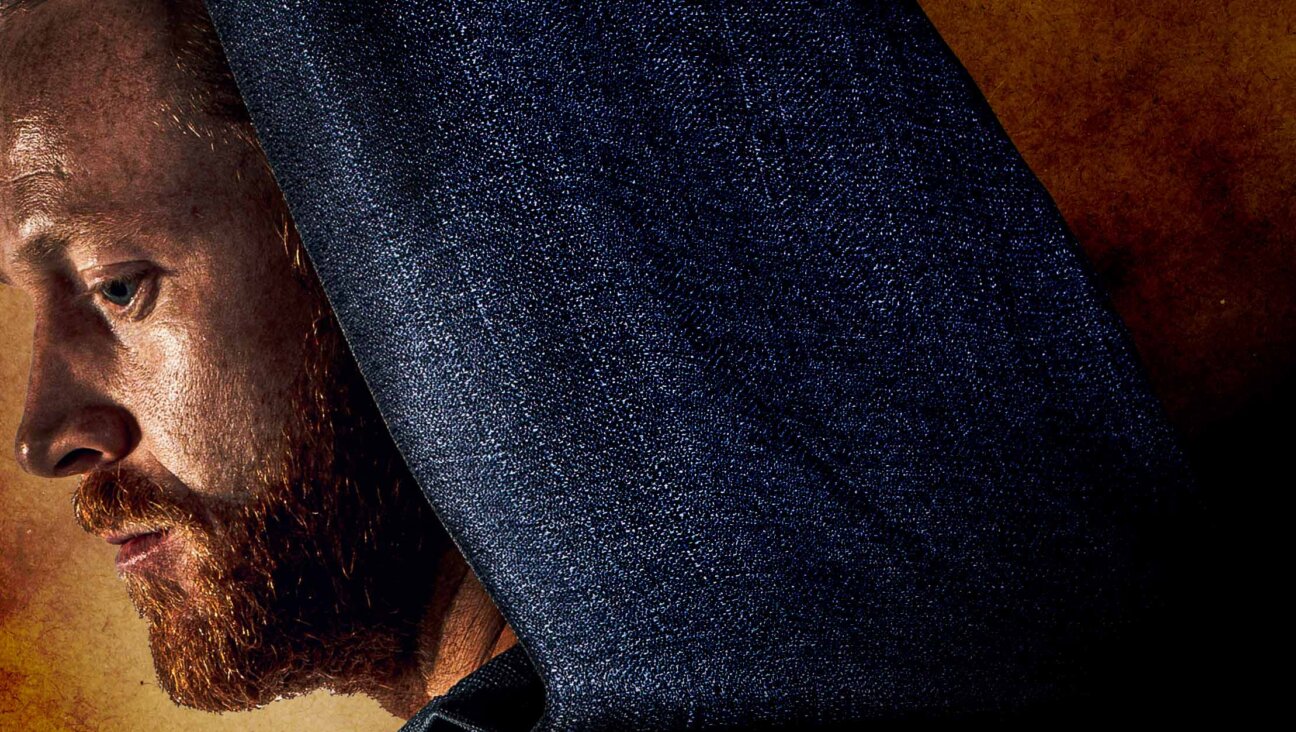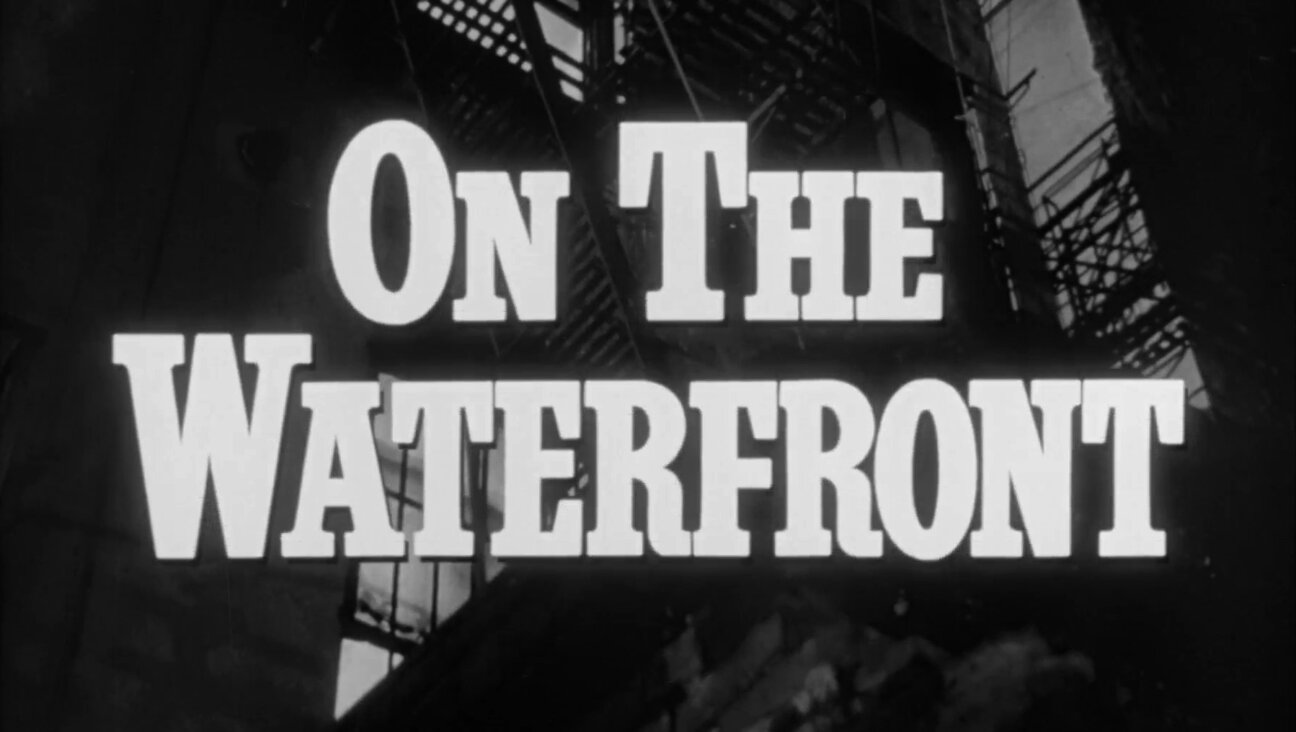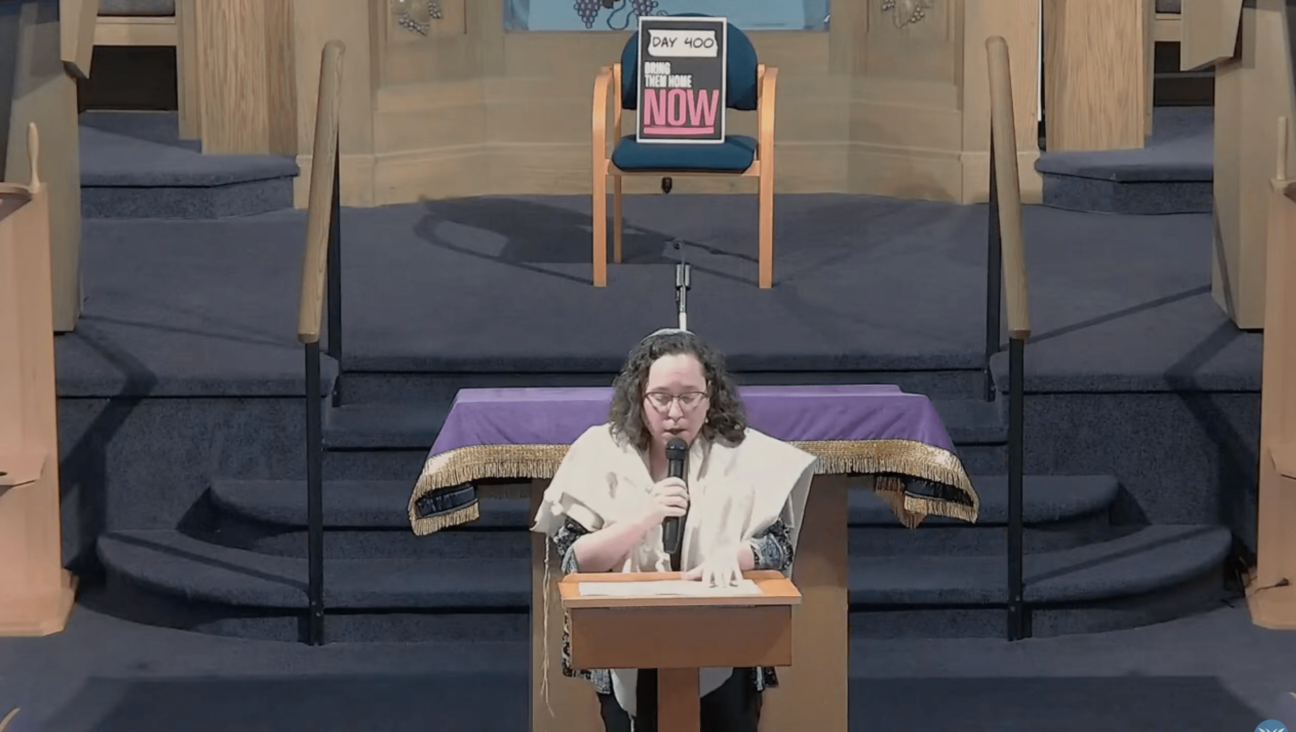Walking Away From Icons
Although artist Lazar (El) Markovich Lissitzky flirted with numerous movements — including Suprematism, the Bauhaus, De Stijl and Constructivism — to some he will always be doomed to remain the artist whose work resembles that of Marc Chagall.
Many Jewish art enthusiasts, who are often prone to describe everything as Chagall-like, frequently confuse the two artists. Both studied with the same painter, Iurii (Yehuda) Mosseevich Pen, at the Vitebsk Art School, and in 1919, Lissitzky accepted Chagall’s invitation to teach at his school, the Vitebsk Popular Art Institute. The illustrations that Lissitzky drew for Mani-Leib’s 1919 folktale “Yingl Tsingl Khvat” (“Young Tongue Scamp”) are particularly easy to mistake for Chagall’s work. The story, about a young boy whose village encounters an obscure problem one year when winter plays hooky, carries a powerful identification with the shtetl through whimsical dreamlike sequences. Instead of winter, the village, which is in a “land that’s quite remote, Beyond the reach of train or boat; Even traveling by horse couldn’t bring you there on course,” becomes one large mud puddle in which horses, carriages and little boys returning home from school get stuck. Lissitzky’s drawings were naturalistic, with heavy lines and a playful, doll-like composure to the figures.
Surely, being compared with Chagall is an honor — especially for a Jewish artist — but Lissitzky often exhibits far more complexity and ambition than Chagall’s one-act show of nostalgic shtetl drawings does. And for proof, one needn’t look further than a new show of his work, opening October 14 in Washington, D.C., at The Phillips Collection.
In fact, it took walking away from Jewish iconography for Lissitzky to truly separate himself from Chagall. The 19 Lissitzky prints in the Phillips show are from his “Victory Over the Sun” drawings for an opera set, and his Prouns (an acronym for Project for the Affirmation of the New) are geometric works situated somewhere among painting, design, sculpture and architecture. In 1923, Lissitzky designed “Proun Room” at the Grosse Berliner Kunstausstellung. He planned it right down to the direction in which he wanted viewers to experience it (clockwise). The room was perhaps Lissitzky’s greatest achievement: creating a space of art and sculptural form rather than creating paintings that employed fake, aesthetic space. As homage, Phillips is arranging its room in a similar fashion to Lissitzky’s prototype.
As curator Margarita Tupitsyn explains in “El Lissitzky: Beyond the Abstract Cabinet,” Lissitzky’s later room, “Abstract Cabinet” was based on the Proun room. Lissitzky described the room that exhibited works by Mondrian, Léger, Picabia, Moholy-Nagy and Gabo, and even some of his own, as a “kind of showcase, or a stage on which the pictures appear as the actors in a drama (or comedy)…. Everything must be based not on colour but on the inherent properties of the material; then the colour of the pictures, of the painting, will shout out (or sing) without restraint.”
Lissitzky managed to avoid Chagall for much of the middle of his career, but he ended up mimicking him. Just as Chagall diluted his Jewish repertoire with crucifixions, Lissitzky admitted defeat in a letter dated September 29, 1932, to German designer and typographer Jan Tschichold. “We fought against ‘art,’ upon whose altar we spit — and now we have it.”
Menachem Wecker is a painter and the assistant editor of B’nai B’rith Magazine in Washington, D.C.
A message from our CEO & publisher Rachel Fishman Feddersen

I hope you appreciated this article. Before you go, I’d like to ask you to please support the Forward’s award-winning, nonprofit journalism during this critical time.
At a time when other newsrooms are closing or cutting back, the Forward has removed its paywall and invested additional resources to report on the ground from Israel and around the U.S. on the impact of the war, rising antisemitism and polarized discourse.
Readers like you make it all possible. Support our work by becoming a Forward Member and connect with our journalism and your community.
— Rachel Fishman Feddersen, Publisher and CEO























